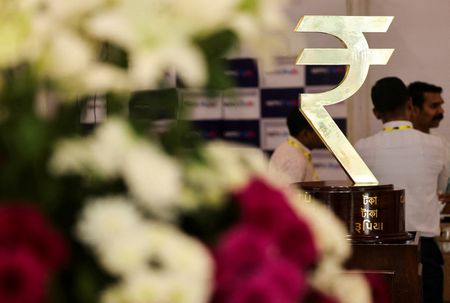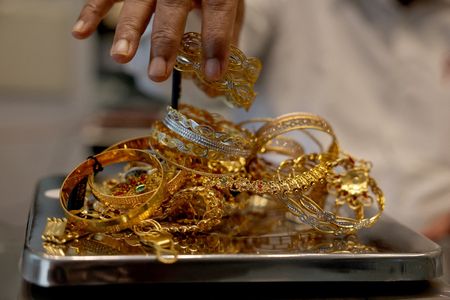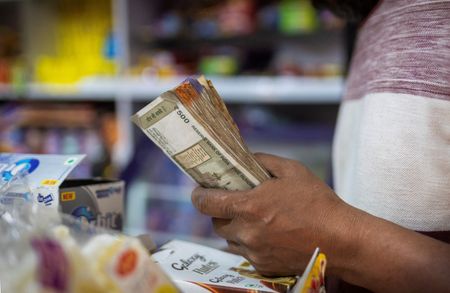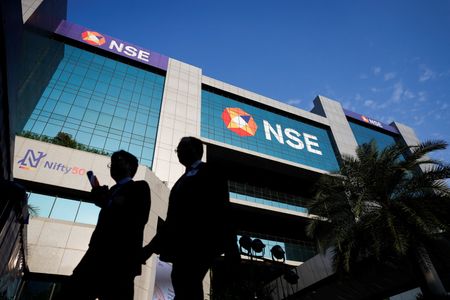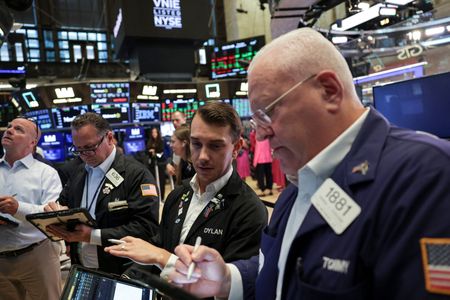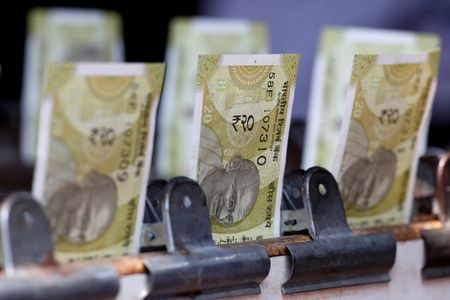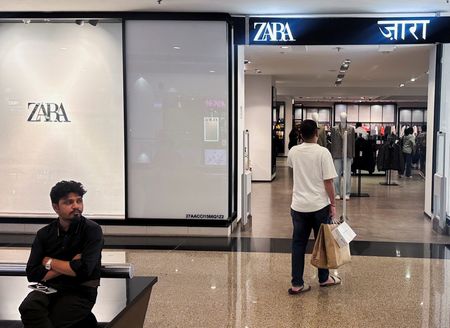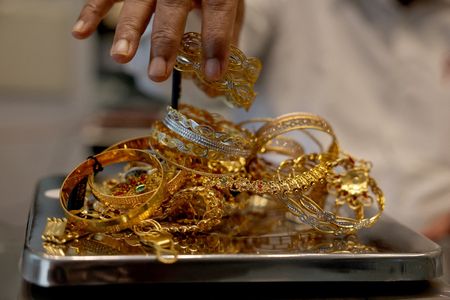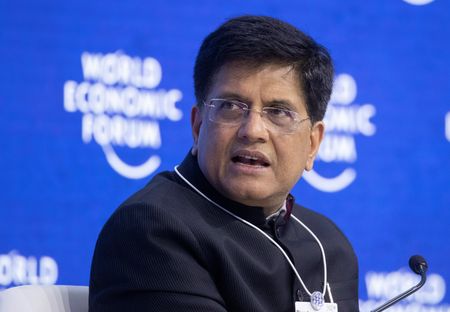By Swati Bhat and Siddhi Nayak
MUMBAI (Reuters) -The decision by India’s central bank to cut rates and flood the banking system with cash will do little to immediately boost demand in Asia’s third-largest economy as global uncertainties restrain corporate investment, bankers and sources said.
The infusion of liquidity, along with two consecutive rate cuts, will at best prevent further deceleration in growth, which probably fell to a four-year low of 6.5% in the financial year ended March 31, 2025, they said.
The Reserve Bank of India’s (RBI) rate actions and liquidity measures are a “welcome relief” for banks but the global macroeconomic outlook has become more uncertain due to the recent trade tariff-related measures and the volatility surrounding them, said Sashidhar Jagdishan, CEO of HDFC Bank, India’s largest private lender by assets.
“Corporates have adopted a wait-and-watch stance, and we are waiting for more clarity,” he added.
On April 9, the RBI cut rates by 25 basis points to 6%, a second cut in as many meetings, and slashedIndia’s growth forecast for 2025-26 by 20 basis points to 6.5%. Since January, it has also bought bonds and conducted long-term FX swaps, infusing over $70 billion into the banking system.
However, banks are now depositing an average 2 trillion rupees ($23.41 billion) at the RBI’s overnight cash parking facility versus 750 billion rupees in January, indicating that most of the surplus cash is not being lent out.
Banks’ lending rates have started declining while corporate bond yields too have fallen 45-60 bps across tenors.
Neither the higher liquidity nor rate cuts are enough to “move the needle” for kick-starting corporate loan growth, said Alka Anbarasu, associate managing director, financial institutions at Moody’s Ratings.
In fact, private capital spending may slow further amid the global tariff wars, analysts said.
“Private capex is about the future and is always a function of the demand and not so much about the cost of capital,” said Gaura Sen Gupta, an economist at IDFC FIRST Bank.
INFLATION COMFORT
The central bank views monetary easing as a means to curb any further downside to growth with softer inflation giving it the leeway to do so, a source aware of the RBI’s thinking said. This was evident in the rate panel’s minutes.
“The fact that growth needs support is clear but monetary stimulus is one of the many factors that can help revive growth and that too works with a lag of 6-9 months,” the source said.
Inflation eased below the RBI’s 4% target in February and March and is seen holding around target in 2025-26.
However, most analysts and sources believe that the government will also need to implement fiscal measures to support the economy if the outlook remains uncertain.
The sources declined to be named as they are not authorised to speak to the media.
“Fiscal side is still overall neutral, so RBI’s accommodative approach will help reduce the downside to growth. The fiscal side push is also essential if one has to help boost growth, right now it is only the RBI which is doing the heavy lifting,” IDFC FIRST’s Sen Gupta said.
($1 = 85.4175 Indian rupees)
(Reporting by Swati Bhat and Siddhi Nayak; Editing by Jacqueline Wong)

